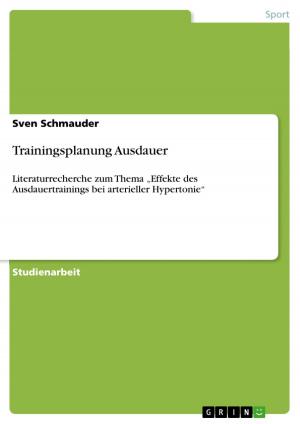| Author: | Tetsuya T. Yamamoto | ISBN: | 1230001813968 |
| Publisher: | 山本 哲也 | Publication: | August 22, 2017 |
| Imprint: | Language: | English |
| Author: | Tetsuya T. Yamamoto |
| ISBN: | 1230001813968 |
| Publisher: | 山本 哲也 |
| Publication: | August 22, 2017 |
| Imprint: | |
| Language: | English |
The purpose of this book is discussions on selecting a formation at midfield. Properties of 36 formations are overviewed. These 36 formations are derived from 3 and 4 DF players and 3 and 4 layers.
Independent parameters constituting the formations are relative positions of the players and distances between the players. The relative positions decide functions of a formation. Also decided are basic concepts of the football tactics that can be applied in a formation for fast break. To quantitatively discuss length of a formation, a personal defense area is modeled. From estimation of the personal defense area, distances between the layers are suggested for the defense. Procedures for selecting a formation are also discussed.
Contents
Chapter 1 Introduction
1.1 The purpose of this book
1.2 The motivation on this book
Chapter 2 Elements of the formations
2.1 Properties of the formations
2.2 Evaluations of the formations
2.3 Shape elements of the formations
2.4 Distances between the layers
Chapter 3 How to select a formation
3.1 Priority on selecting a formation and movements of the players
3.2 Selection of a formation
3.3 Design of movements of the players in slow break
3.4 The compatibility of 3-layer and 4-layer formations
3.5 Implementation of the individual movement
Chapter 4 Discussions
4.1 Why particular formations are applied?
4.2 Asymmetric formations
4.3 Numerical advantage or one-to-one?
4.4 Fine adjustment or Plan B
4.5 Middle- and long-shots against the defense
4.6 Mismatch
Chapter 5 Summary
The purpose of this book is discussions on selecting a formation at midfield. Properties of 36 formations are overviewed. These 36 formations are derived from 3 and 4 DF players and 3 and 4 layers.
Independent parameters constituting the formations are relative positions of the players and distances between the players. The relative positions decide functions of a formation. Also decided are basic concepts of the football tactics that can be applied in a formation for fast break. To quantitatively discuss length of a formation, a personal defense area is modeled. From estimation of the personal defense area, distances between the layers are suggested for the defense. Procedures for selecting a formation are also discussed.
Contents
Chapter 1 Introduction
1.1 The purpose of this book
1.2 The motivation on this book
Chapter 2 Elements of the formations
2.1 Properties of the formations
2.2 Evaluations of the formations
2.3 Shape elements of the formations
2.4 Distances between the layers
Chapter 3 How to select a formation
3.1 Priority on selecting a formation and movements of the players
3.2 Selection of a formation
3.3 Design of movements of the players in slow break
3.4 The compatibility of 3-layer and 4-layer formations
3.5 Implementation of the individual movement
Chapter 4 Discussions
4.1 Why particular formations are applied?
4.2 Asymmetric formations
4.3 Numerical advantage or one-to-one?
4.4 Fine adjustment or Plan B
4.5 Middle- and long-shots against the defense
4.6 Mismatch
Chapter 5 Summary















